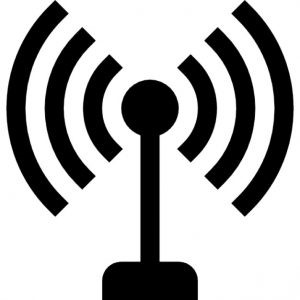
I first read the new Radio Equipment Directive 2014/53/EU (aka the “RED”) in 2014 when it was published and noted its similarity to the other NLF Framework Directives as it pertains to the documentation compliance process and the conformity modules. Really, that is the point of the NLF: to make it easier for manufacturers to sell in Europe. The RED replaces the R&TTE Directive for equipment with radio communication ability and the new Directive offers an easier way to show compliance as pertains to the declaration of conformity.
In the other technical Directives we work with on a daily basis, there was no major change to the format or structure of the document. The RED is different because of the introduction of the simplified EU declaration of conformity.
A ‘simplified’ EU declaration of conformity? What is that?
To answer that question, let’s use the opportunity to briefly explain the concept of the declaration of conformity and what it is. A declaration of conformity is what sets the CE marking Directive apart from all other Directives, Regulations, and Decisions we see when understanding what our clients must do to send their products to the EU.
Broadly, if the Directive requires a CE marking, then it also requires that the product has a declaration of conformity. On the other hand, if an applicable Directive requires that the manufacturer must compile a declaration of conformity, then it will also make a requirement for a CE marking. They go hand-in-hand.
So, what is a declaration of conformity? A declaration of conformity is a one-page (usually) document that indicates at a minimum the name and address of the manufacturer, product information (model, description, serial number or range of serial numbers), the Directives complied with, the EN standards applied to prove conformity, and a sentence declaring sole responsibility by the manufacturer for the compliance of the product.
There is no mystery or magic to the declaration of conformity. The manufacturer even has a simple list to refer to in the Directive. See the RED 2014/53/EU, Annex VI.

Please note that there is no place for a 3rd party lab to sign or stamp the EU declaration of conformity. There is instruction regarding indicating that a Notified Body has been involved, however, in those cases it would be unlikely that the 3rd party test lab would be the same as the Notified Body because of the inherent of conflict of interest. Indeed, involvement by a Notified Body is as much a check on the manufacturer as it is on the technical intervention of the test lab.
Looking at the document, it seems simple enough and if you were making only a handful of products it would be pretty simple to draft a declaration of conformity each time you make a product or a handful of products. But, what if you make a bunch of products and in high quantities? It might be more challenging to draft and sign the documents in those cases.
The simplified EU declaration of conformity can make that easier. In the RED 2014/53/EU we first see the mention of it in recital (31).

It is mentioned again in Article 10 (9) and provides the instruction that it can be referred to by internet address.

And, finally, we see in Annex VII it is listed on its own.

This allows for a manufacturer to ease the compliance burden for a product by putting the declaration of conformity on the web, instead of printing it in a manual. Additionally, we note that you can indicate a range of serial numbers on a single declaration of conformity. That means you can indicate, using one web address, the sole declaration of conformity to prove compliance for an unlimited number of products to which the declaration of conformity applies – and you can update the document to indicate new serial numbers and even new compliance methods (for instance new testing if a standard is revised, etc.).
I want to note that although I have known about the simplified declaration of conformity for two years it was not until I read a similar requirement in the new PPE Regulation (EU) 2016/425, recital (24) that I decided to point this new trend out in a blog article.

You may consider it a good idea to adopt the simplified EU declaration of conformity format, even for products that don’t require it (for instance, medical devices, or products under the Low Voltage Directive) because it could ease the overall burden of keeping the document in order: One document in one place.
F2 Labs is here to help.
Have a question or a comment? We can be contacted via this link. We can be reached by phone at 855-652-7281 and are here to help you.
